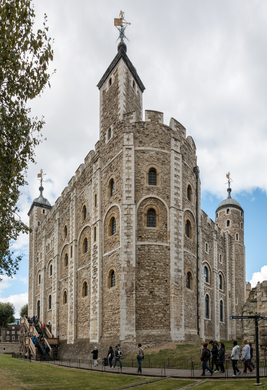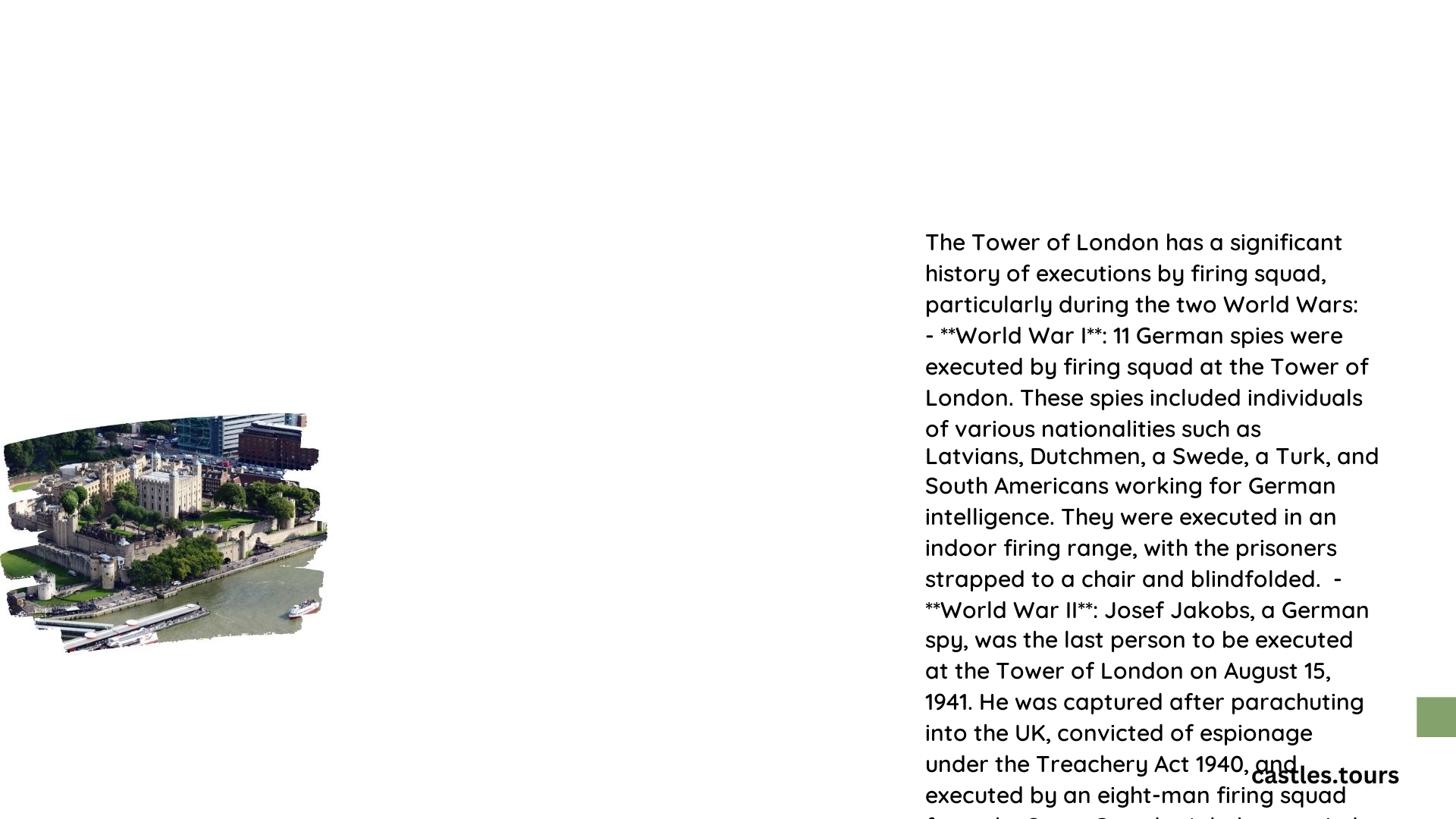The Tower of London, a fortress with a dark history, served as the site for executions by firing squad during World Wars I and II. This practice, though rare, left an indelible mark on British military history. From 1914 to 1941, the Tower witnessed the execution of twelve spies, marking a grim chapter in its long and storied past. These executions, carried out with military precision, reflected the heightened security measures of wartime Britain.
What Was the Historical Context of Tower of London Firing Squad?

The use of firing squads at the Tower of London was primarily confined to the two World Wars. This method of execution was reserved for those convicted of espionage, a crime considered particularly heinous during times of national crisis.
World War I Executions
During World War I, the Tower of London became the execution site for German spies. The most notable case was that of Carl Lody, executed on November 6, 1914. Lody’s execution marked the first at the Tower in over 150 years, setting a precedent for subsequent wartime executions.
Key facts about World War I executions:
– Total number of executions: 11
– Nationalities of the executed: Germans, Latvians, Dutchmen, a Swede, a Turk, and three South Americans
– Execution location: Indoor firing range of the Tower
World War II Execution
The sole execution during World War II was that of Josef Jakobs, a German spy. Jakobs was captured after parachuting into England on January 31, 1941. His execution on August 15, 1941, would be the last at the Tower of London.
How Were Firing Squad Executions Conducted?

The executions by firing squad at the Tower of London followed a strict protocol, reflecting the gravity of the situation and the military nature of the proceedings.
What Was the Execution Procedure?
- Early morning timing: Executions were typically carried out at dawn to avoid publicity.
- Prisoner preparation: The condemned were given the option to have their eyes covered.
- Restraints: Some prisoners, like Josef Jakobs, were tied to a chair and blindfolded.
- Firing squad composition: Elite military units, such as the Grenadier Guards or Scots Guards, formed the firing squads.
- Weapons used: .303 Lee-Enfield rifles were the standard firearms for executions.
What Were the Military Protocols?
- Trials were often held in camera, especially for sensitive cases involving espionage.
- Sentences were carried out swiftly after the trial, sometimes within days.
- Executions took place in the indoor firing range or the drained moat of the Tower.
- Bodies were buried in secret locations to maintain confidentiality.
What Rules Governed Tower of London Firing Squad Executions?
The executions at the Tower of London were governed by strict rules and protocols:
- Secrecy: Executions were kept confidential to avoid public attention.
- Military jurisdiction: Trials were conducted under military law, allowing for execution by firing squad.
- Logistical precision: Executions were coordinated to ensure minimal disruption and maximum secrecy.
- Humane considerations: In some cases, like Jakobs’, some firing squad members were issued blanks to ensure a humane execution.
What Are the Key Statistics and Dates of Tower of London Firing Squad?
| War Period | Number of Executions | Notable Dates |
|---|---|---|
| World War I | 11 | November 6, 1914 (Carl Lody) |
| July 30, 1915 (Janssen and Roos) | ||
| World War II | 1 | August 15, 1941 (Josef Jakobs) |
How Did the Tower of London Firing Squad Impact History?
The Tower of London firing squad executions left a lasting impact on British military and legal history:
- Revived an ancient practice: These executions marked the return of the Tower as a place of execution after a long hiatus.
- Wartime justice: Demonstrated the severity of wartime justice systems and the treatment of spies.
- Historical significance: The executions, particularly that of Josef Jakobs, marked the end of an era for the Tower’s role in military executions.
- Espionage legacy: These events highlighted the intense counterintelligence efforts during both World Wars.
What Controversies Surrounded the Tower of London Firing Squad?
The use of firing squads at the Tower of London was not without controversy:
- Secrecy concerns: The clandestine nature of the executions raised questions about transparency in military justice.
- Ethical debates: The use of capital punishment for espionage sparked moral discussions.
- International relations: The execution of foreign nationals had potential diplomatic repercussions.
- Historical preservation: The use of a historic site for modern military executions was debated by preservationists.
How Has the Legacy of Tower of London Firing Squad Been Preserved?
The legacy of the Tower of London firing squad executions has been preserved in various ways:
- Historical records: Detailed accounts of the executions are maintained in national archives.
- Museum exhibits: The Tower of London itself features information about this period in its exhibitions.
- Academic research: Historians continue to study these events, providing new insights into wartime Britain.
- Cultural references: The executions have been featured in literature, films, and documentaries about World War espionage.
References:
1. Executing German Spies at the Tower of London During World War I
2. German Spies Executed at the Tower of London During the Two World Wars
3. Shot at the Tower – The National Archives blog
